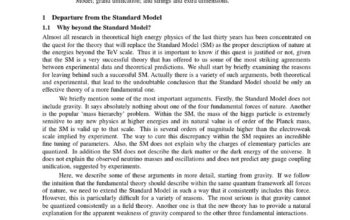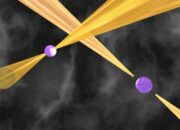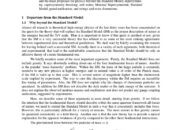Microwaves, the ubiquitous elements of everyday technology, play a crucial role in understanding the cosmos. One of the remarkable phenomena associated with microwaves is their polarization, a property that has garnered increasing interest within the scientific community, particularly in the context of the early universe. This article delves into the significance of polarized microwaves, exploring their origins, implications for cosmology, and the potential for unveiling new physics.
The polarization of microwaves refers to the orientation of their electromagnetic waves. In essence, polarization can be linear, circular, or elliptical, determined by the particular configuration of the electric field vector associated with the wave. Various processes can impart polarization to microwaves, including scattering and emissive mechanisms inherent to cosmic phenomena. By scrutinizing these polarized signals, researchers can glean insight into the extremely early moments of the universe, shortly after the Big Bang.
To understand the relevance of microwave polarization, one must first consider the cosmic microwave background (CMB) radiation. The CMB serves as a relic from the early universe, specifically from a time approximately 380,000 years post-Big Bang when electrons and protons combined to form neutral hydrogen and the universe became transparent to radiation. This isotropic radiation permeates the cosmos, detectable as a faint glow across the entire sky, but it is not merely a homogenous field. Instead, local variations in temperature and density give rise to intricate patterns that can be analyzed through their polarization states.
Polarization in CMB can arise from several processes, notably Thomson scattering. As photons from the primordial plasma interacted with electrons during the recombination epoch, a scattering phenomenon occurred, which led to the polarization of the emitted microwaves. This polarization effect is crucial as it encodes information about the conditions of the early universe. Importantly, the polarization can also reveal the presence of gravitational waves generated during cosmic inflation, an exponential expansion of the universe shortly after the Big Bang.
The detection of polarized microwaves has been a major scientific endeavor. Instruments like the Wilkinson Microwave Anisotropy Probe (WMAP) and the Planck satellite have significantly advanced our understanding by mapping the CMB’s temperature fluctuations and polarization patterns. These datasets are crucial for testing various cosmological models, including those predicting multiple inflationary scenarios and their respective signatures in the polarization spectrum.
One of the most compelling aspects of studying the polarization of microwaves is its potential to uncover new physics beyond the currently accepted standard model of cosmology. For instance, discrepancies between observed and predicted polarization patterns may hint at phenomena such as dark energy or the manipulation of spacetime on a quantum level. Such exploration of microwave polarization offers fertile ground for theoretical expansion. Researchers are particularly interested in the B-mode polarization, a distinctive signature that could signal the influence of primordial gravitational waves.
Scientific consensus suggests that the B-mode polarization can unveil details about the inflationary epoch’s energy scale. Einstein’s theory of general relativity postulates that gravity is the curvature of spacetime, and inflationary models posit that in the universe’s nascent moments, rapid expansion occurred. Discovering strong evidence for B-mode polarization could thus not only validate these models but also refine our comprehension of fundamental forces governing the universe.
However, the quest for B-mode polarization is fraught with challenges. Various foreground signals, such as emissions from dust within our galaxy, can obscure these delicate signatures, complicating analyses. As such, advanced observational techniques, alongside sophisticated algorithms for distinguishing between the cosmological signal and foreground noise, have become paramount. Upcoming missions like the Simons Observatory and the CMB-S4 project aim to push the envelope further, promising enhanced sensitivity in detecting and characterizing these elusive polarizations.
Beyond the cosmological implications, the exploration of polarized microwaves stands to influence various disciplines within physics. The methodologies developed for analyzing cosmological polarization have parallels in condensed matter physics, where similar techniques are employed to understand complex systems like superconductors and quantum liquids. This cross-pollination of ideas underlines the universality of physical principles, showcasing how the study of cosmic phenomena can inform terrestrial physics.
In conclusion, the journey into understanding polarized microwaves invites a multifaceted examination of the early universe. Through the polarization of microwaves, we gain access to information about cosmic inflation, the dynamics of primordial plasma, and ultimately the fundamental structure of our universe. As we refine our observational techniques and engage with new astrophysical models, the potential to uncover groundbreaking insights remains vibrant. Researchers stand on the brink of further exploration, tuning into the early signals of the universe as they continue to seek answers to some of the most profound questions in cosmology. The legacy of studying microwaves in this context will undoubtedly unfold in the years ahead, reshaping our understanding of the cosmos and our existence within it.











